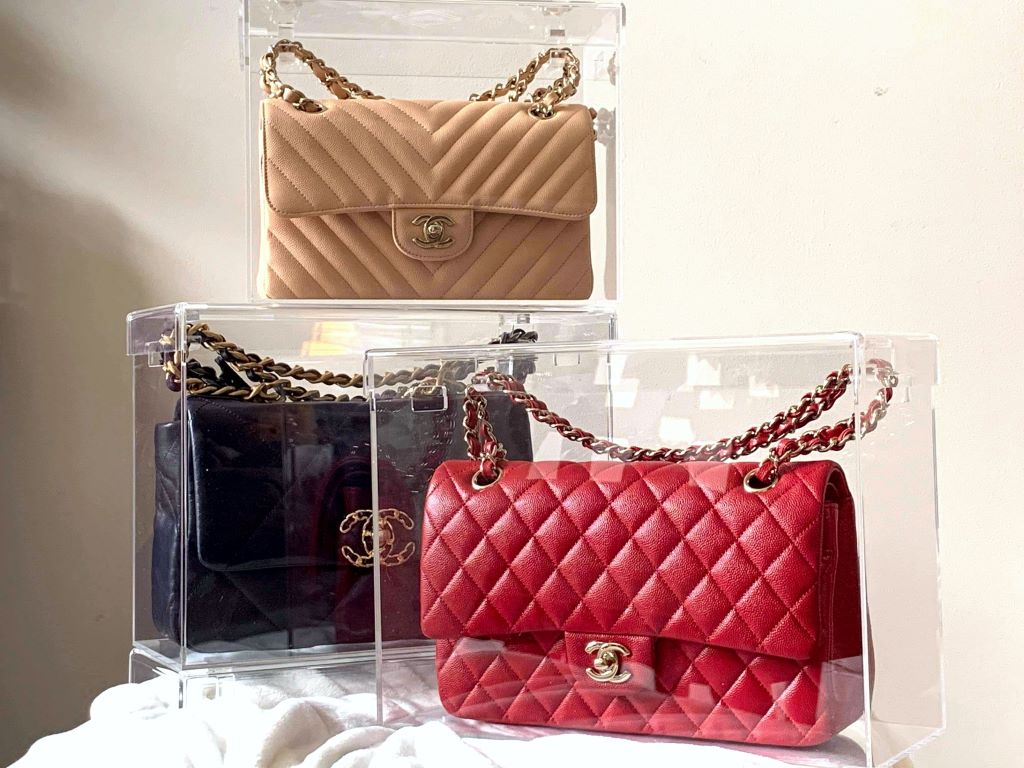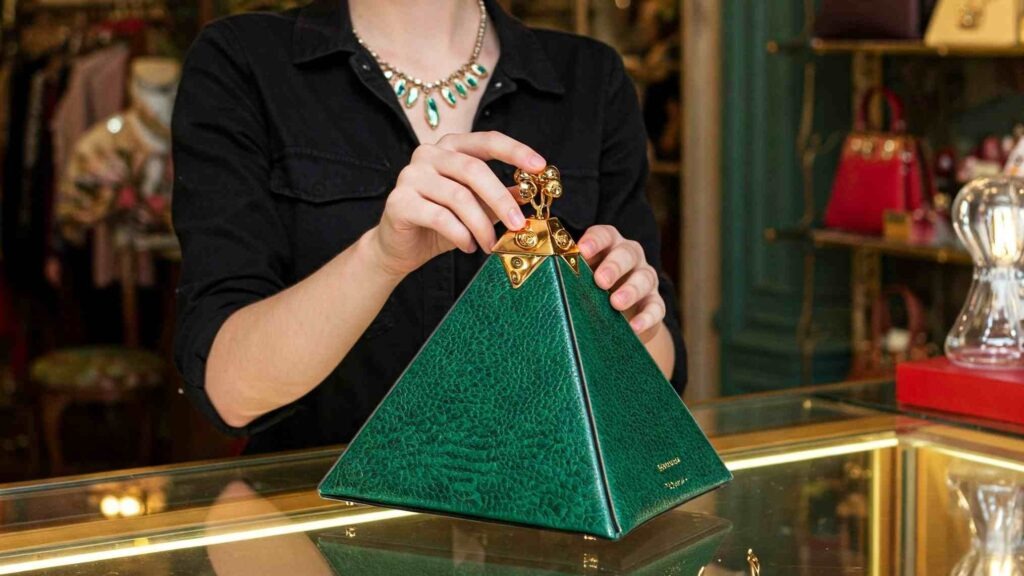
Rare Luxury Bag Collection Guide
Understanding the World of Rare Luxury Bags
Collecting rare luxury bags has become one of the most exciting investment opportunities in recent years. Additionally, these timeless pieces combine fashion, art, and financial potential in a unique way. Whether you are new to luxury collecting or expanding your existing wardrobe, understanding the fundamentals is essential. Luxury On Sales offers curated selections for collectors at every level, making it easier to start your journey into this fascinating world.
The luxury handbag market has grown significantly over the past decade. However, not all designer bags are created equal. Some pieces appreciate in value while others remain stable or even depreciate. Therefore, knowing which bags to collect requires research, patience, and strategic thinking. This guide will help you navigate the complex landscape of rare luxury bag collecting.
The Luxury Bag Pyramid Explained
Understanding the luxury bag pyramid is crucial for any serious collector. This hierarchy categorizes handbags based on exclusivity, craftsmanship, brand prestige, and resale value. At the top of the pyramid sit ultra-rare pieces like the Hermès Himalaya Birkin and limited-edition collaborations. These bags often fetch six-figure prices at auction and are considered investment-grade collectibles.
The middle tier includes iconic styles from heritage brands such as Chanel Classic Flaps, Louis Vuitton limited editions, and Dior’s signature pieces. These bags maintain strong resale value and are more accessible than top-tier options. Meanwhile, the base of the pyramid features entry-level luxury bags that introduce collectors to premium craftsmanship without extreme price points.
Why Rare Luxury Bags Are Investment Pieces
Luxury bags have consistently outperformed traditional investments like stocks and gold in recent years. According to Knight Frank’s Luxury Investment Index, rare handbags have shown remarkable appreciation rates. Additionally, these tangible assets provide enjoyment while potentially growing in value.
Several factors contribute to a bag’s investment potential. Limited production numbers create scarcity, which drives demand among collectors. Furthermore, brand heritage and craftsmanship ensure longevity and timeless appeal. Condition and authenticity are equally important, as pristine examples with original documentation command premium prices.
The secondary market for luxury bags has expanded dramatically with platforms dedicated to authenticated resale. Therefore, collectors now have more opportunities to buy and sell rare pieces than ever before. This liquidity makes luxury bags increasingly attractive as alternative investments.
Essential Brands for Your Collection
Certain brands consistently deliver investment-worthy pieces. Hermès remains the gold standard, with waiting lists for their Birkin and Kelly bags stretching years. Each Hermès bag is handcrafted by a single artisan, taking up to 48 hours to complete. This dedication to quality ensures these pieces retain exceptional value.
Chanel’s Classic Flap bags have become modern icons. The brand regularly increases retail prices, which supports resale values in the secondary market. Moreover, limited-edition releases and seasonal colors create additional collector interest. Vintage Chanel pieces from specific years also command premium prices.
Louis Vuitton collaborations with artists like Stephen Sprouse, Takashi Murakami, and Yayoi Kusama have become highly collectible. These partnerships blend fashion with contemporary art, creating pieces that appeal to diverse collectors. Similarly, Dior’s vintage bags and special editions maintain strong market performance.
Building Your Collection Strategically
Starting a luxury bag collection requires careful planning. First, establish a clear budget and collecting focus. Some collectors prefer one brand, while others diversify across multiple houses. Additionally, decide whether you want wearable pieces or pure investment items.
Research is fundamental to successful collecting. Study auction results, follow market trends, and join collector communities online. Furthermore, familiarize yourself with authentication methods to avoid counterfeits. Reputable sellers provide certificates of authenticity and detailed provenance information.
Consider condition carefully when purchasing pre-owned bags. Mint condition pieces command the highest prices, but gently used bags offer better value. Therefore, inspect hardware, leather, stitching, and interior carefully before committing. Professional restoration services can address minor issues, though original condition always remains preferable.

Sourcing Rare Luxury Bags
Finding rare luxury bags requires knowing where to look. Boutiques occasionally receive highly sought-after pieces, though building relationships with sales associates improves access. Additionally, authorized retailers sometimes have exclusive releases or special orders available.
The secondary market offers broader selection and immediate availability. Established luxury consignment boutiques authenticate and guarantee their inventory, providing peace of mind. Online platforms have revolutionized luxury resale, though buyers should verify authentication processes and return policies.
Auction houses like Christie’s and Sotheby’s regularly feature exceptional luxury bags. These venues provide transparency through condition reports and expert authentication. However, auction fever can drive prices beyond reasonable levels, so setting firm limits beforehand is wise.
Caring for Your Investment
Proper maintenance preserves both beauty and value. Store bags in dust covers within climate-controlled environments away from direct sunlight. Additionally, stuff bags with acid-free tissue to maintain shape and prevent creasing. Avoid hanging bags by handles, as this can cause distortion over time.
Clean bags regularly using appropriate products for each material type. Leather bags benefit from conditioning treatments, while exotic skins require specialized care. Therefore, consulting professional cleaning services for valuable pieces is often worthwhile. Keep original packaging, authentication cards, and receipts, as these significantly impact resale value.
Rotate your collection rather than using the same bag daily. This extends lifespan and maintains condition across your entire collection. Furthermore, consider insurance for high-value pieces to protect against theft, loss, or damage.
Market Trends and Future Outlook
The luxury bag market continues evolving with changing consumer preferences. According to Vogue Business, sustainability concerns are influencing collector behavior, with vintage and pre-owned bags gaining popularity. This shift supports strong secondary market growth and creates opportunities for savvy collectors.
Younger collectors increasingly view luxury bags as alternative investments rather than mere accessories. Social media has amplified this trend, with platforms showcasing collections and facilitating community building. Additionally, blockchain technology and digital authentication tools are emerging to combat counterfeiting and improve transparency.
Certain categories show particularly strong growth potential. Vintage bags from the 1980s and 1990s are experiencing renewed interest. Meanwhile, limited-edition collaborations and artist partnerships consistently outperform standard releases. Exotic skin bags remain controversial but continue commanding premium prices among traditional collectors.
Common Mistakes to Avoid
New collectors often make predictable errors that impact their investment returns. Impulse purchases without research frequently result in overpaying or acquiring pieces with limited resale potential. Therefore, taking time to study the market before buying is essential.
Neglecting authentication is another serious mistake. Sophisticated counterfeits flood the market, and even experienced collectors can be fooled. Always purchase from reputable sources with authentication guarantees and return policies. Additionally, consider independent authentication services for high-value purchases.
Emotional attachment can cloud judgment about condition issues or fair pricing. While collecting should be enjoyable, maintaining objectivity about value and condition protects your investment. Furthermore, avoid overconcentration in single brands or styles, as diversification reduces risk.
Conclusion
Building a rare luxury bag collection combines passion with strategic investing. Understanding the luxury bag pyramid helps collectors make informed decisions about which pieces deserve space in their wardrobes. Additionally, focusing on quality, authenticity, and proper care ensures your collection maintains and grows in value over time.
The market for rare luxury bags shows no signs of slowing, with strong demand from established and emerging collectors worldwide. However, success requires research, patience, and disciplined buying practices. By following the guidelines outlined in this guide, you can build a collection that provides both personal enjoyment and financial returns for years to come.
Frequently Asked Questions
What makes a luxury bag rare and valuable?
Rarity comes from limited production numbers, discontinued styles, special materials, or artist collaborations. Additionally, condition, provenance, and brand prestige significantly impact value. Bags with complete original packaging and documentation command premium prices in the resale market.
How much should I budget to start collecting luxury bags?
Entry-level collecting can begin with $2,000 to $5,000 for pre-owned designer pieces. However, investment-grade bags typically start at $10,000 and can exceed $100,000 for ultra-rare examples. Therefore, start with your budget and gradually expand as you gain knowledge and resources.
Are luxury bags better investments than stocks or real estate?
Luxury bags have shown strong returns historically, though they should complement rather than replace traditional investments. Unlike stocks, bags provide tangible enjoyment while potentially appreciating. However, they lack liquidity compared to publicly traded securities and require proper storage and maintenance.
How can I authenticate a luxury bag before purchasing?
Professional authentication services examine stitching, hardware, materials, stamps, and serial numbers against known standards. Reputable sellers provide authentication certificates from recognized services. Additionally, learning brand-specific details like font styles, logo placement, and construction methods helps identify counterfeits.
What are the best brands for investment collecting?
Hermès consistently delivers the strongest returns, particularly Birkin and Kelly bags. Chanel Classic Flaps maintain excellent value retention with regular price increases. Louis Vuitton collaborations and Dior vintage pieces also show strong performance. However, condition and rarity matter more than brand alone when determining investment potential.
Related Topics:
How to Store Winter Coats: Your Ultimate Guide
Is Dooney and Bourke a Luxury Brand?



Average Rating